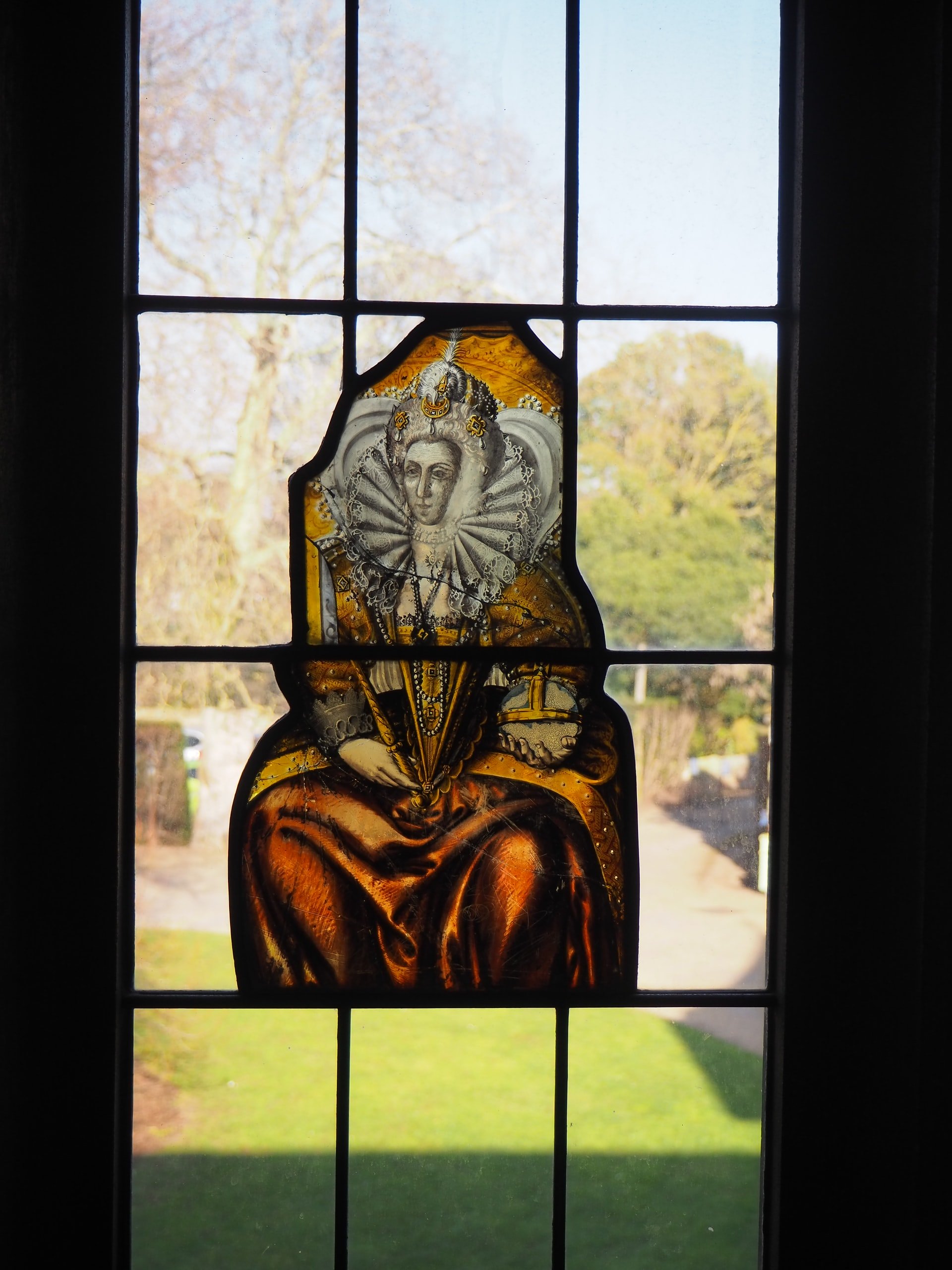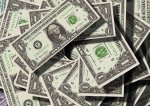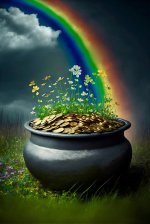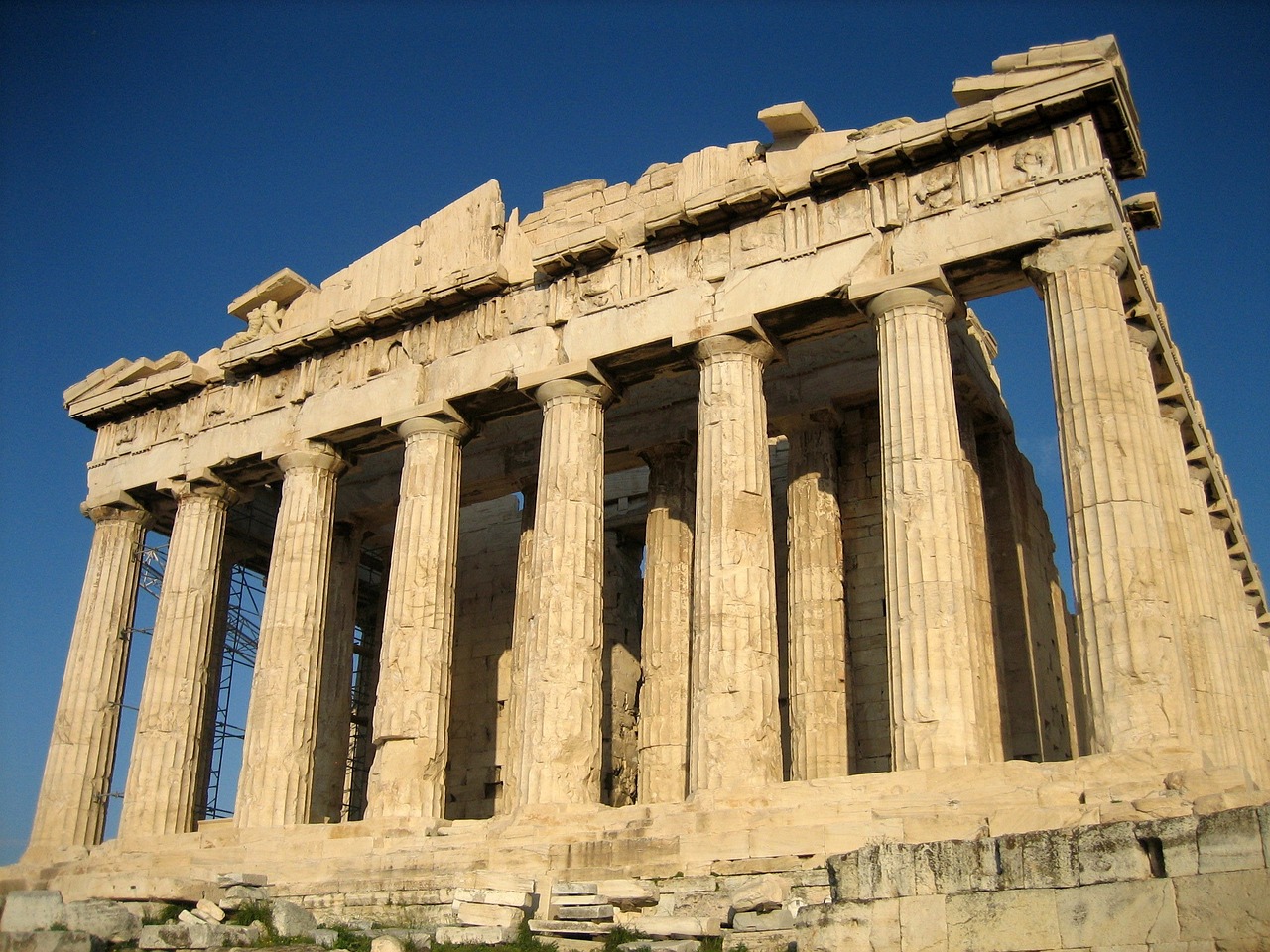Elizabethan Era

The Elizabethan Era is the epoch (highest point) of the Tudor dynasty (1485 to 1603) during the reign of Queen Elizabeth I (1558–1603).
Elizabethan England was a Golden Age in English history, the English Renaissance and naval triumph over Spain.
The symbol of Britannia (national personification of Great Britain as a helmeted female holding a trident and shield), was first used in 1572 to mark Elizabethan England as a renaissance.
Elizabeth's reign is famous for its vibrant theater era as William Shakespeare and others composed plays that we still read and watch today and, for her resilience during the war with Spain and the decisive defeat of the invincible Armada.
House of Tudor
The dynasty of the House of Tudor descended from the Tudors of Penmynydd (a community on Anglesey, Wales) and Catherine of France (1519 – 1589).
They ruled the Kingdom of England and its realms, including their ancestral Wales and the Lordship of Ireland (later the Kingdom of Ireland) from 1485 until 1603, with five monarchs in that period.
They were Henry VII, Henry VIII, Edward VI, Mary I and Elizabeth I.
Elizabeth was the daughter of Henry VIII and Anne Boleyn, his second wife, who was executed on the 19th of May, 1536.
Henry VIII married Jane Seymour eleven days after Anne's execution.
Elizabeth I was the last of the five monarchs of the House of Tudor (she did not marry and left no heirs).
The State of Virginia, U.S.A. was named for Queen Elizabeth I of England, who was known as the Virgin Queen.
Sir Walter Raleigh suggested the name about 1584 and was given permission to colonize the Virginia region.
Elizabethan Era Golden Age
The Elizabethan Era is called the Golden Age of England marking the height of the English Renaissance by some of the greatest poets and literary writers of the period.
Elizabeth understood the importance of the arts, culture, and what a lasting legacy meant to future generations.
The Victorian era and the early 20th century idealized the Elizabethan Era.
William Shakespeare
The most famous playwright, poet and actor of the Elizabethan Era was William Shakespeare (26 April 1564 – 23 April 1616) who is regarded as the greatest writer in the English language and the world's greatest dramatist.
Shakespeare was born and raised in Stratford-upon-Avon, Warwickshire and married Anne Hathaway at the age of eighteen, with whom he had three children:
He was called England's national poet and the "Bard of Avon" (or simply "the Bard").
During his lifetime, William Shakespeare wrote around 39 plays such as Macbeth, Romeo and Juliet and Hamlet for the theater and over 150 sonnets.
His plays have been translated into every major living language and are performed more often than those of any other playwright.
The Globe, erected in 1599 on the south bank of the Thames by the Lord Chamberlain's Men is the theater most commonly associated with the performance of Shakespeare's plays.
Another venue was Blackfriars Playhouse where Shakespeare's later plays were performed there.
Christopher Marlowe
Christopher Marlowe (26 February 1564 – 30 May 1593) was an English playwright, poet and translator of the Elizabethan Era noted especially for his dramatic blank verse (poetry that does not rhyme).
Two of his most famous works were The Jew of Malta and Doctor Faustus.
His poems include Hero and Leander in 1598 and The Passionate Shepherd of His Love.
Edmund Spenser
Edmund Spenser (1552/1553 – 13 January 1599) was an English poet best known for his epic poem, The Faerie Queene.
His work reflects the ideals and the patriotism of the Elizabethan Era.
The Faerie Queene was so well liked by Elizabeth that she granted Edmund Spenser a pension for life.
Miniature Portraiture
The Elizabethan Era was dominated by delicate, miniature handmade portraits, (called limning) on vellum (parchment made from calf skin), prepared card, copper, or ivory.
Nicholas Hilliard
Nicholas Hilliard (1547-1619), a goldsmith and limner was the first great painter of the English Renaissance in the medium of portrait miniatures that exemplify the visual images of the Elizabethan Era.
He produced many portrait miniatures of members of the Elizabethan courts and portraits of Elizabeth I which are now in the National Portrait Gallery, London, and the Walker Art Gallery, Liverpool.
Elizabethan Era Architecture
Elizabethan Era architecture featured houses with high chimneys, overhanging first floors, front porch columns, dormer windows (roofed structure containing a window) and thatched roofs.
Other features used versions of the Dutch gable (sides have a shape made up of one or more curves and a pediment at the top) and Flemish strap-work (stylized ornament of ribbon-like forms) in geometric designs which can be seen on the towers of the 1580s, Wollaton Hall in Nottingham and the 1598, Montacute House in South Somerset.
Ordinary homes were built with massive wooden beams filled in with bricks, then covered with plaster and whitewash called "half-timbering" because up to half of the structure is timber.
Prodigy houses were large country houses with long galleries for walking in, and elaborate roof-lines, that were built by courtiers and other wealthy families.
Protestantism in England
Martin Luther, a German, was responsible for the beginnings of the Protestant Reformation in 1517 when he nailed his famous "Ninety-five Theses on the Power and Efficacy of Indulgences" to a church door in Wittenburg in present day Germany.
The Protestant Reformation came to England during the 16th century at a time when Henry VIII wanted to divorce his wife, Catherine of Aragon so he could marry Anne Boleyn.
When Pope Clement VII refused to annul the marriage, Henry declared in 1534 that he should have the final authority relating to the English church.
When Elizabeth I took the throne, her first acts were to institute an Oath of Supremacy, requiring anyone taking public or church office to swear allegiance to the English monarch as head of the Church and State.
In 1563, the 39 articles laid out the doctrinal foundations for the Church of England.
The Elizabethan church restored the 1552 version of the English Prayer Book but allowed for two interpretations of communion, one Catholic and one Protestant.
The royal family of today, are the head of the Church of England, which is a Protestant Anglican church, and they've been a part of this religion since the 16th century.
East India Company
The East India Company was an English, and later British, joint-stock (business owned by its investors) company founded and given a monopoly in 1600 to trade in the Indian subcontinent, Southeast Asia, and later with Qing China.
From the mid-1700s, the company accounted for half of the world's trade in commodities such as spices, tea, sugar, salt, cotton, silk and other exotic products which they imported back to Europe.
The company eventually came to rule the beginnings of the British Empire in India in 1757, exercising military and administrative functions.
They seized control of large parts of the Indian subcontinent, colonized parts of Southeast Asia and Hong Kong after the First Opium War, and maintained trading posts and colonies in the countries surrounding the Persian Gulf.
The company lost all its administrative and political powers following the Government of India Act of 1858.
Its Indian possessions and armed forces were taken over by the Crown on the 1st of June, 1874 in the form of the new British Raj.
Spanish Armada
In 1588, Philip II of Spain sent a Spanish naval invasion force against England to overthrow Queen Elizabeth I and stamp out Protestantism in England.
He also wanted to stop English interference in the Spanish Netherlands and English and Dutch privateering ships (private individuals commissioned by governments) disrupting Spanish interests in the Americas.
The defeat of the Armada saved the throne of Elizabeth I, guaranteed English independence from Spain and laid the foundation of the future British Empire.
Age of Exploration
The European Age of Exploration or, the Age of Discovery, began in the early 15th century and lasted through to the 17th century.
It was motivated to increase their wealth and power in Europe.
The sought spices, silk and precious metals, new lands to map, faster trade routes to the far east and to spread the Christian faith.
The Roman Catholic Church spread Christianity in the New World to convert the indigenous peoples during the Age of Exploration.
Portugal and Spain were the early leaders in the Age of Exploration.
Through the Treaty of Tordesillas Spain got most of the Americas while Portugal got Brazil, India and Asia.
Famous explorers of the period were:
*Christopher Columbus
Christopher Columbus (1451–1506) was an Italian explorer and navigator who completed four voyages across the Atlantic Ocean, opening the way for the widespread European exploration and colonization of the Americas.
His expeditions were sponsored by Queen Isabella I and King Ferdinand II of Spain.
Vasco da Gama
Vasco da Gama (1460s – 24 December 1524) a Portuguese explorer, was the first European to reach India by sea around the Cape of Good Hope.
His discovery established Portugal as a major colonial empire.
Pedro Álvares Cabral
Pedro Álvares Cabral (1467 or 1468 – 1520) was a Portuguese nobleman, military commander, navigator and explorer who discovered Brazil.
Juan Ponce de León
Juan Ponce de León (1474 – July 1521) was a Spanish explorer and conquistador who led the first European expedition to Florida and served as the first governor of Puerto Rico.
When he traveled to Florida in 1513, he searched for the Fountain of Youth, a spring that allegedly restores the youth of anyone who drinks or bathes in its waters.
Ferdinand Magellan
Ferdinand Magellan (4 February 1480 – 27 April 1521) was a Portuguese explorer who is credited with planning and leading the 1519 Spanish expedition to the East Indies across the Pacific Ocean to open a maritime trade route.
He discovered the most important natural sea passage between the Atlantic and Pacific oceans separating mainland South America to the north and Tierra del Fuego to the south.
The sea passage now bears his name - The Strait of Magellan.
Ferdinand Magellan was killed in the Battle of Mactan in 1521 in the present-day Philippines.
The surviving members of the expedition completed the first circumnavigation of the globe and returned to Spain in 1522.
English Exploration
Until the 1550s the English had mainly traded with Europe.
The discovery of the Americas and the first circumnavigation of the globe made exploration of economic importance during the Elizabethan Era.
John Cabot
John Cabot, (Italian, Giovanni Caboto, 1450 - 1499), navigator and explorer, was granted a letters patent (legal written order) by Henry VII (28 January 1457 – 21 April 1509) in 1496, to to explore, claim and possess any new lands as long as they did not intrude on Spanish or Portuguese territories.
John Cabot was the first English explorer in the New World through his voyages in 1497 and 1498.
He discovered Newfoundland and Cape Breton Island on the North American coast which helped lay the groundwork for the later British claim to Canada.
Legendary, Elizabethan exploresrs include:
Sir Francis Drake (1540 – 28 January 1596)
Sir Francis Drake was an English explorer, sea captain, privateer, slave trader, naval officer, and politician whose exploits made him a hero in England, but a pirate, known as El Draque to the Spanish.
In 1570 and 1571, Drake made two profitable trading voyages to the West Indies.
In 1572, he captured the port of Nombre de Dios on the Isthmus of Panama known to the Spanish as Tierra Firme and to the English as the Spanish Main.
Drake attacked Spanish ships carrying treasures and raided Portuguese ports in the Atlantic Ocean.
He is the first Englishman to circumnavigate the world in a single expedition, from 1577 to 1580 after Ferdinand Magellan's expedition in 1522.
This included his incursion into the Pacific Ocean which, until then, was an area of exclusive Spanish interest.
He claimed New Albion on the North American west coast (an area in what is now the U.S. state of California) in 1579 for England.
English charters across America to the Atlantic coast influenced further national expansion projects on the continent.
Drake was vice admiral, in command of the English fleet (under Lord Howard of Effingham) in the destruction and defeat of the mighty Spanish Armada that was attempting to invade England in 1588.
The victory helped England to create a great empire in the New World.
Elizabeth I awarded Drake a knighthood in 1581 which he received on his ship, the Golden Hind in Deptford (on the south bank of the River Thames in southeast London).
In the same year Drake was appointed mayor of Plymouth.
Sir Walter Raleigh (1552 – 29 October 1618)
Sir Walter Ralegh was an English statesman, soldier, writer, poet and explorer of the Elizabethan Era.
He played a leading role in the English colonisation of North America, suppressed a rebellion in Ireland, helped defend England during the Spanish Armada and held political positions under Elizabeth I.
Raleigh has been credited with bringing potatoes and tobacco back to Britain, although both of these were already known in Spain.
Raleigh first came to the attention of Elizabeth I in 1580, when he went to Ireland to help suppress the Desmond Rebellions in 1569–1573 and 1579–1583 in the Irish province of Munster.
The rebellions were motivated by the desire to maintain the independence of feudal lords from their monarch but also had an element of religious antagonism between Catholic Geraldines and the Protestant English State.
Raleigh placed his cloak over a puddle so that Queen Elizabeth I can keep her feet dry and was awarded a royal charter to organize the first English colonies in Virginia, named after the Virgin Queen herself (Elizabeth I).
In 1594, Raleigh heard of a "City of Gold" in South America and sailed to find it, publishing an exaggerated account of his experiences in a book that contributed to the legend of "El Dorado".
Sir John Hawkins (1532 – 12 November 1595)
Sir John Hawkins was a pioneering English naval commander, administrator, privateer and an early promoter in the Atlantic slave trade of the sixteenth century.
In the battle which defeated the Spanish Armada in 1588, Hawkins served as a Vice-Admiral and was knighted for gallantry.
Later he devised the naval blockade that intercepted Spanish treasure ships leaving Mexico and South America.
Sir Richard Hawkins 1562 - 1622
Admiral Sir Richard Hawkins was the son of Admiral Sir John Hawkins
Sir Richard Hawkins was an Elizabethan seaman, explorer and privateer who saw action against the Spanish Armada in 1588.
In 1593, he sailed to South America to raid Spanish colonies on the Pacific coast.
Sir Martin Frobisher 1535 - 1594
Sir Martin Frobisher was an English seaman and privateer who made three voyages to the New World looking for the North-west Passage.
As a privateer, he plundered the treasures of French ships off the coast of Africa.
In the 1570s, he made three voyages to discover a Northwest Passage but instead, discovered Labrador and what is now Frobisher Bay, an inlet of the Davis Strait in the Qikiqtaaluk Region of Nunavut, Canada.
He was knighted in 1588 for his service in repelling the Spanish Armada.
Sir Richard Grenville (1542 - 1591)
Sir Richard Grenville was an English privateer, explorer and lord of the manors of Stowe, Cornwall and Bideford, Devon.
He participated in the plantations of Ireland, the English colonization of the Americas and the repulse of the Spanish Armada.
Grenville also served as Member of Parliament for Cornwall, High Sheriff for County Cork and Sheriff of Cornwall.
Sir Humphrey Gilbert (1539 - 1583)
Sir Humphrey Gilbert was an English explorer, member of parliament and soldier who was a pioneer of the English colonial empire in North America and the Plantations of Ireland.
Royal Union With Scotland
On August 1503, James IV of Scotland married Margaret, eldest daughter of Henry VII of England which brought Scotland's Stuarts into England's Tudor line of succession.
The Tudor dynasty ended when Queen Elizabeth I died in 1603 and her cousin, James VI of Scotland became king of England and Ireland thus forming the personal union of the three kingdoms as James I in the Union of the Crowns.
In January 1707 the Scottish Parliament voted itself out of existence.
This led to the creation of the United Kingdom of Great Britain on the 1st of May of that year.
The UK Parliament met for the first time in October 1707.
Ezine Articles Author Link
Click on the Link Below

Solo Build It! Home Page
Click on the Link Below

Newsletter Opt-in-Form
The Keen Traveler
Recent Articles
-
The Power of Money
Mar 23, 25 03:53 AM
The power of money provides financial security, enables one to fulfill financial needs, improves the quality of life and gives peace of mind during unexpected financial emergencies. -
Simplicity tranquility and enlightenment
Mar 16, 25 06:01 AM
Simplicity tranquility and enlightenment empowers the individual to live lighter and to add value to life through meaningful goals. -
Faith History and Culture
Jan 02, 25 12:48 AM
Faith history and culture have impacted human history in all places and times.


